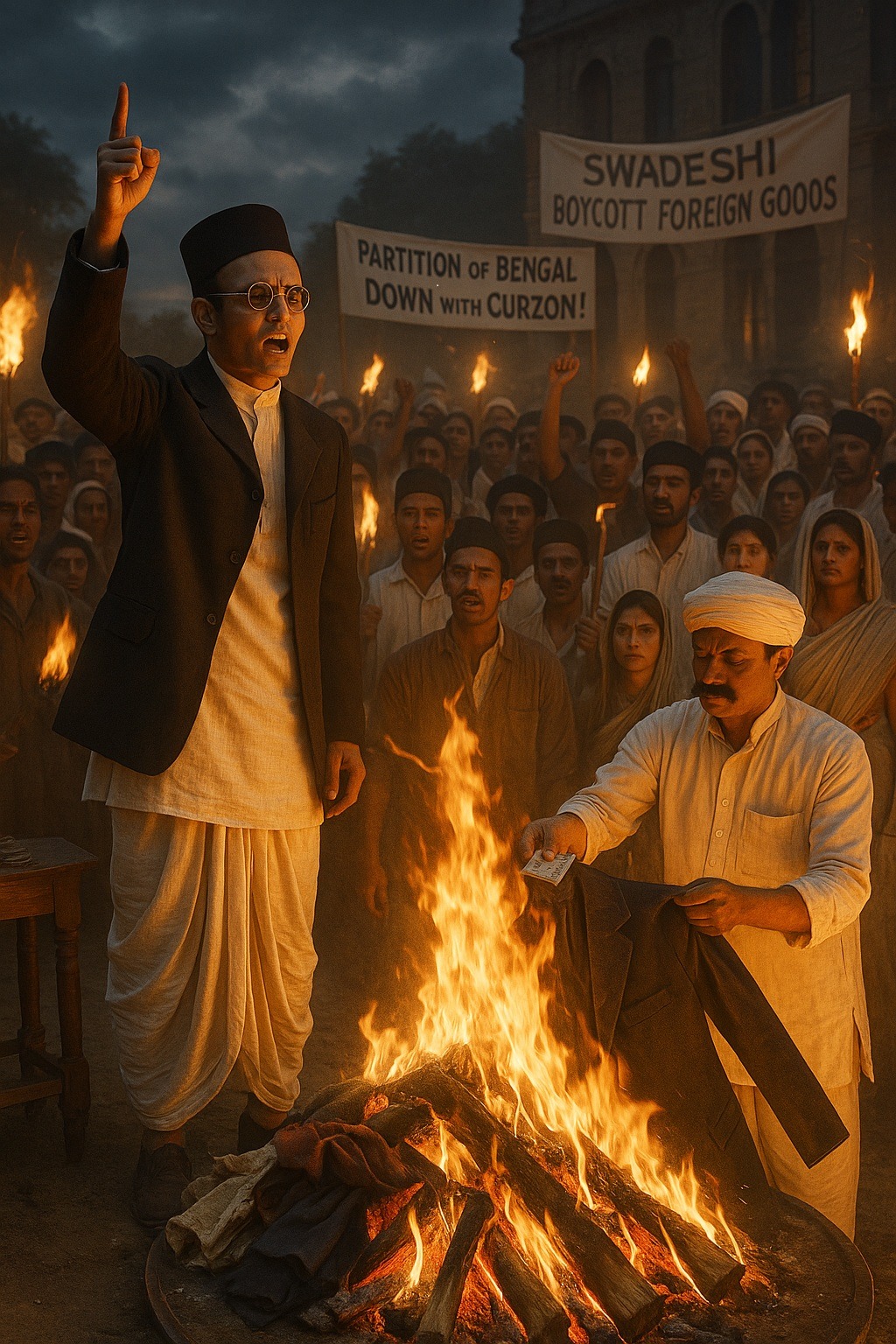All Blogs
Discover
The Whirlwind’s Archive
This section contains the complete archive of The Whirlwind is a blog dedicated to the life, thought, and influence of Vinayak Damodar Savarkar. Each entry explores aspects of his political action, philosophical thinking, social reform efforts, historical interpretations, and cultural legacy. The blog aims to offer critical insights into Savarkar’s role in shaping modern Indian political and ideological discourse.

-
Phadke’s Legacy and Savarkar’s Inspiration
Read more: Phadke’s Legacy and Savarkar’s InspirationToday marks the birth anniversary (4 November 1845) of Vasudev Balwant Phadke, one of the pioneering figures who inaugurated the revolutionary era during British rule in India. Phadke raised a fighting force of about three hundred determined young men and waged a campaign of resistance against the colonial occupiers. At the heart of his struggle…
-
Savarkar’s Vision of Economic Nationalism
Read more: Savarkar’s Vision of Economic NationalismEconomic Dimension of Hindutva, Part 11; Savarkar’s Economic Principles (7/13) Introduction: Economic Development as a Pillar of National Progress Economic development has always stood at the heart of national progress, shaping the strength and sovereignty of a nation. Among the many debates surrounding economic strategy, one of the most enduring concerns the role of the…
-
Savarkar and India’s Language Question
Read more: Savarkar and India’s Language QuestionWhen Vinayak Damodar (Veer) Savarkar reflected on what holds a nation together, he looked beyond geography or race. For him, true national unity demanded not only shared ideals but also a shared language (a Rashtrabhasha) — a medium through which those ideals could live, circulate, and bind people together. Savarkar viewed communication as the ‘lifeblood…
-
Public Bonfire: It was Savarkar, Not Gandhi!
Read more: Public Bonfire: It was Savarkar, Not Gandhi!In the history of India’s Swadeshi movement, it was Vinayak Damodar (Veer) Savarkar, not ‘Mahatma’ Gandhi, who first organized a public bonfire of foreign goods. A fact which gets often sidelined or ignored by ‘biased INC’ historians. In 1905, when he was in his early twenties, Vinayak Damodar (Veer) Savarkar became a passionate student leader…
-
Savarkar’s Perspective on Ahimsa and Himsa
Read more: Savarkar’s Perspective on Ahimsa and HimsaPolitical Dimension of Hindutva, Part 13 Introduction – A Justification of “Relative Violence” Violence and non-violence have long been central themes in Indian philosophical and political thought. Vinayak Damodar (Veer) Savarkar, a key proponent of Hindutva, presented a unique discourse on the subject, arguing for a pragmatic approach to violence—what he termed “just, relative violence.”…
-
Savarkar’s Notion of Just, Relative Violence
Read more: Savarkar’s Notion of Just, Relative ViolencePolitical Dimension of Hindutva, Part 12 Introduction – Savarkar’s Radical Philosophy of Resistance Few statements in modern Indian political thought are as provocative as Vinayak Damodar (Veer) Savarkar’s declaration that relative non-violence is a virtue, absolute non-violence a crime. This concise yet explosive maxim captures the essence of Savarkar’s departure from the dominant ‘Gandhian ethos’…










